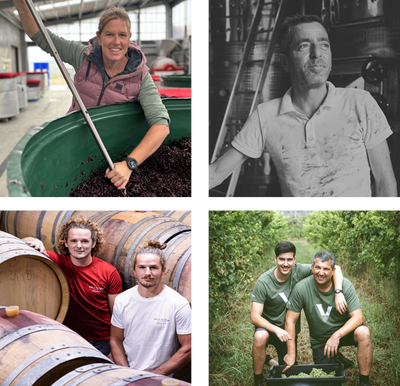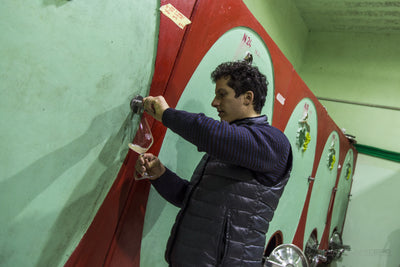For its status as a new world country, South Africa's vinous history dates back over 360 years, with the first vines being planted by Dutch settlers in 1685 in the stunning foothills of the Constantia mountain, overlooking False Bay. Picked not just for its magnificent views, but for its favourable grape growing conditions: its decomposed granite soils, cooling sea breezes and sheltered location, its these first vines of Constantia that shape SA's vinous history, none more so than in the legendary sweet wine, Vin de Constance.
The first barrels of the sweet Constantia wine were sent back to Europe by the Dutch East India Company in 1692, and within a remarkably short space of time the name ‘Vin de Constance’ rapidly became the talk of the town among the European aristocracy. In 1726, Johannes Colijn negotiated annual shipments of his wine with the Dutch East India Company – and he soon couldn’t keep up with demand, with sweet Constantia wine being sought after and savoured for the next 150 years. There's even records that Louis XVI and Marie Antoinette supposedly had more bottles of 'Vin du Cap Constance' in the cellars at Versailles than Burgundy! And then, at the end of the 19th century, disaster struck, with production ceasing in part due to the change in trading restrictions and the untimely arrival of vine diseases to the Cape, in particular, phylloxera, which decimated the estate's vineyards.
Fast forward a century, and the arrival of new owners the Jooste family heralded a fresh start for Klein Constantia. On a mission to produce world class wines and return the estate to its former glory, they resolved to recreate the great sweet wine of old, even down to the distinctively shaped handblown glass bottle with its asymmetrical shape and large side dimple. As for the vines, early records were studied and a careful selection of a Muscat de Frontignan clone was made that is believed to be the original stock planted by the Cape's first commander Jan van Riebeeck, in the 1650s. The maiden Vin de Constance 1986 was launched in 1990 to instant acclaim, and things have been on an upward trajectory ever since.
And so, the wine itself? If you've been lucky enough to sip on a glass of this sweet elixir, you'll know just how special and totally delicious it is, and to share a bottle with friends or family makes for an incredibly special and unforgettable experience. It is a natural sweet wine, produced exclusively from Muscat de Frontignan grapes that naturally dry on the vines without botrytis, picked over many weeks and multiple passes through the vineyards entirely by hand in the cool early hours of the morning. Every stage and step is executed with meticulous attention to detail, from the sorting, to the slow and steady fermentation to the ageing for several years in barrel. Winemaker Matt is incredible precise - a perfectionist in pursuit of the most elegant of sweet wines that's so beguiling to drink young, but with the capacity to drink for years to come. This is the thing about Vin de Constance. It's about making a sweet wine that doesn't taste overtly sweet, so in balance is the sugar, alcohol and acidity.
Some press on previous vintages on Vin de Constance:
"meticulously crafted, profound, rare and utterly delicious world class wine” – Neal Martin
"a sensual and also sensitive wine...an astral haze of delight with orange blossom, fig, lemon verbena, wild honey and acacia notes ......if you have never tasted this wine before, please start with this vintage – it will blow your mind." Matthew Jukes on the 2018
"This is really sensational ...It goes on for so long. And then again. Yet, it remains balanced. A great sweet wine through and through."
James Suckling on the 2017.

